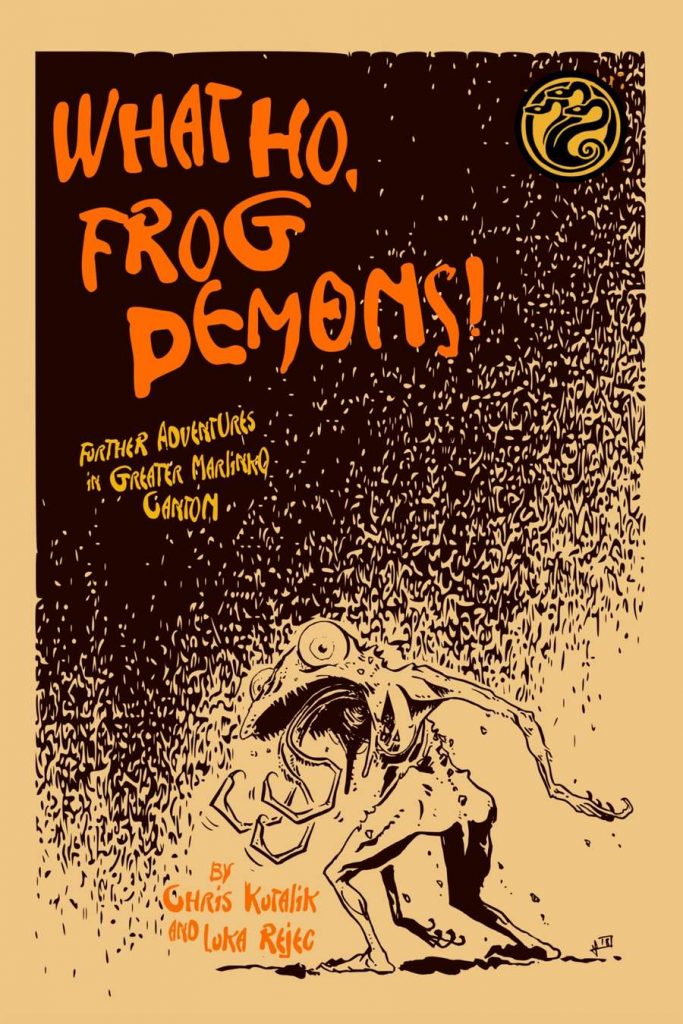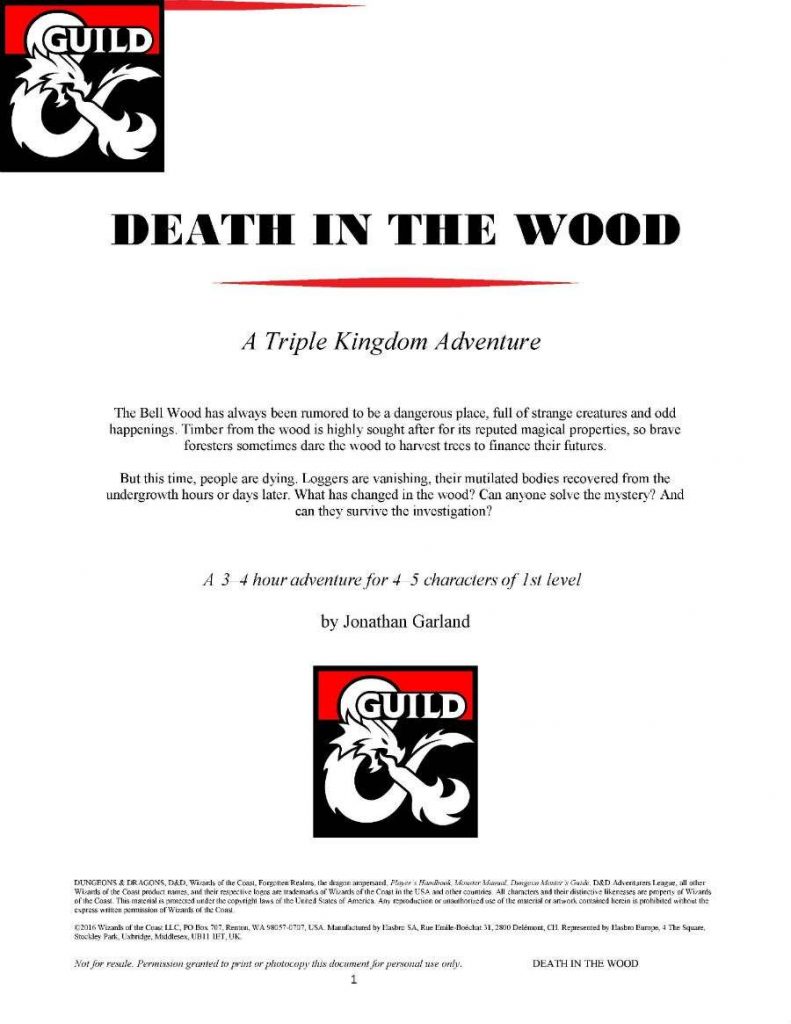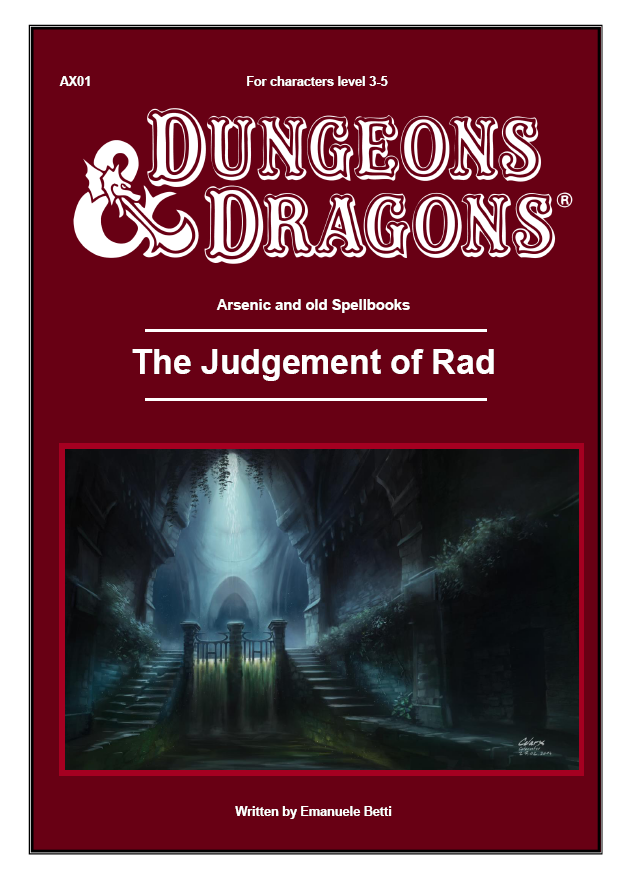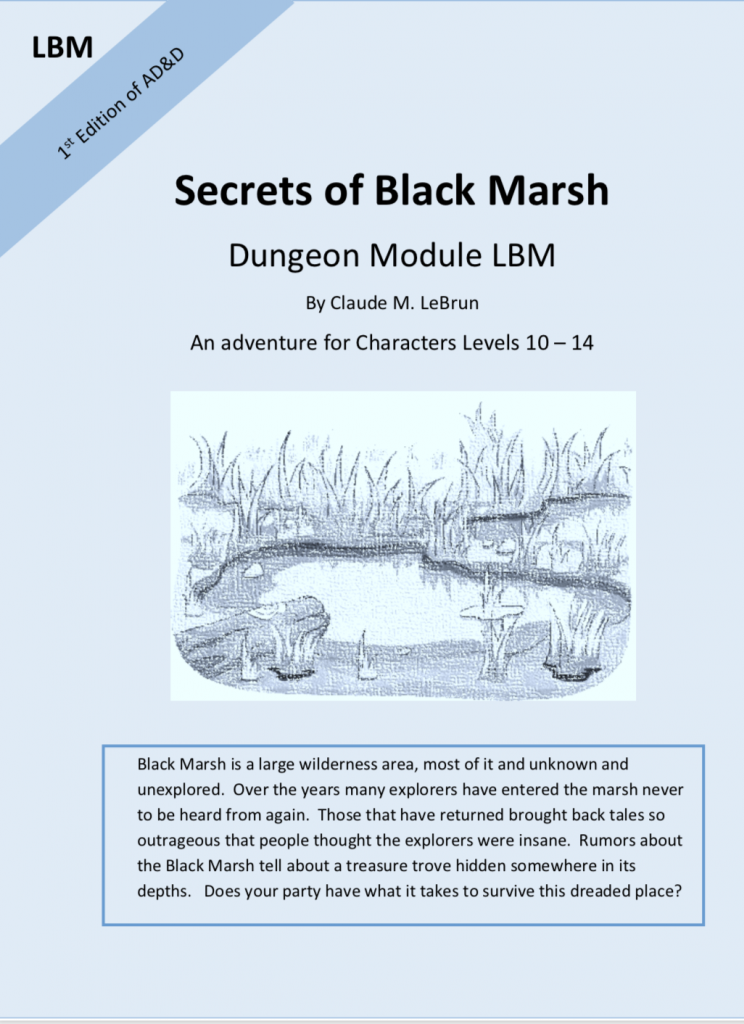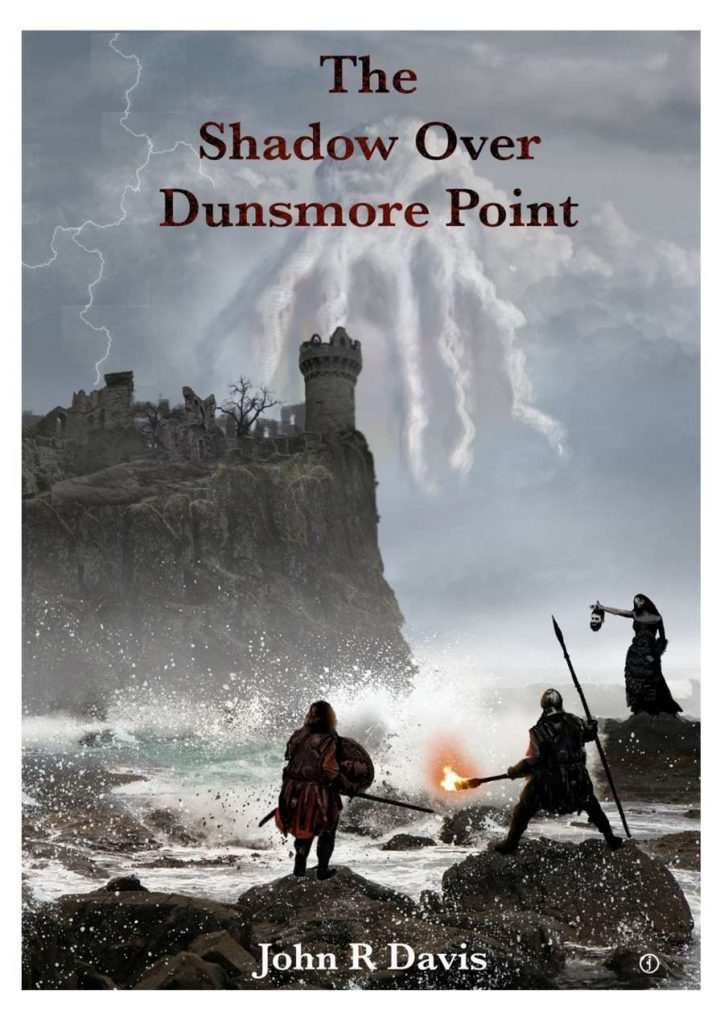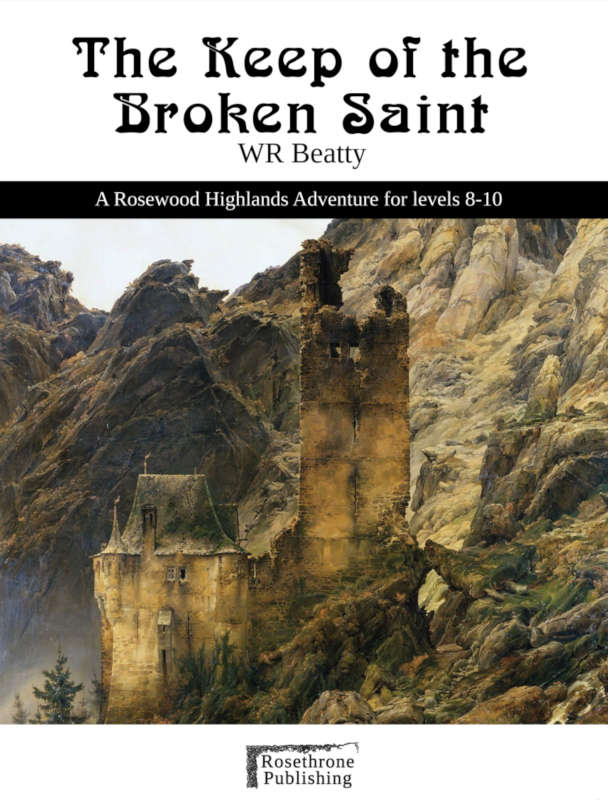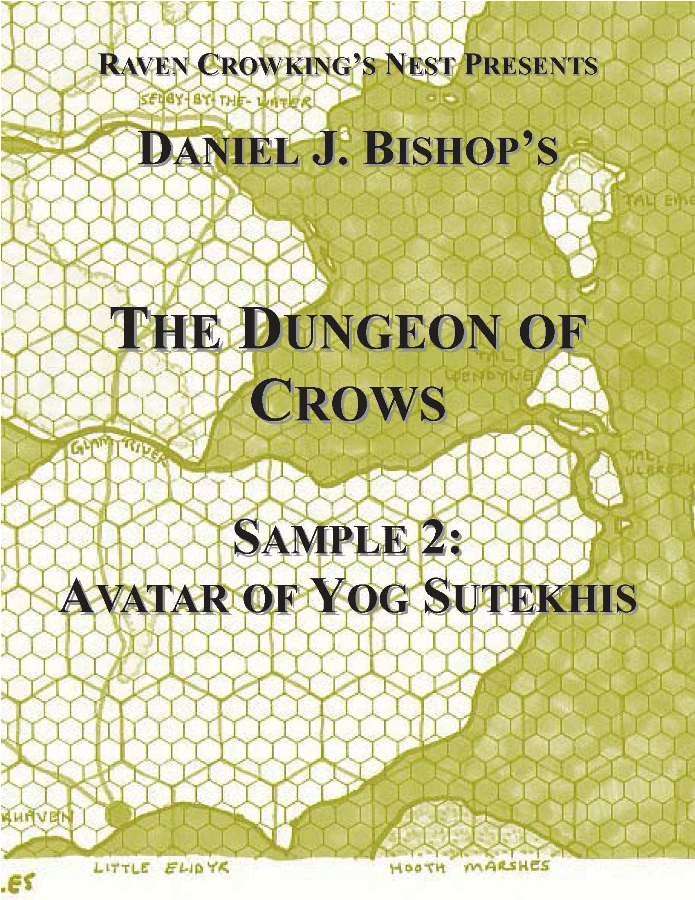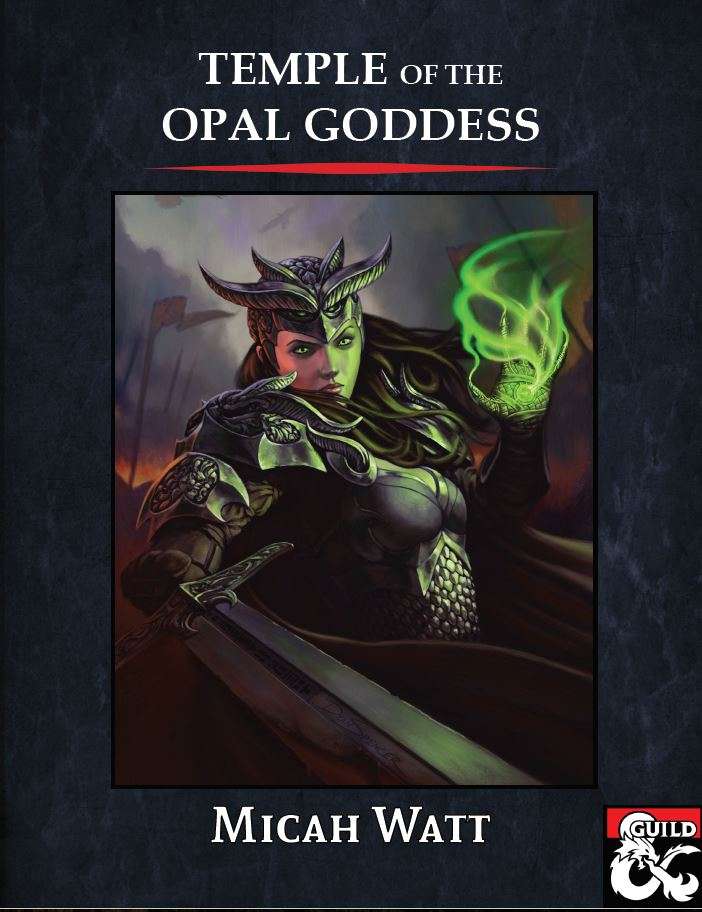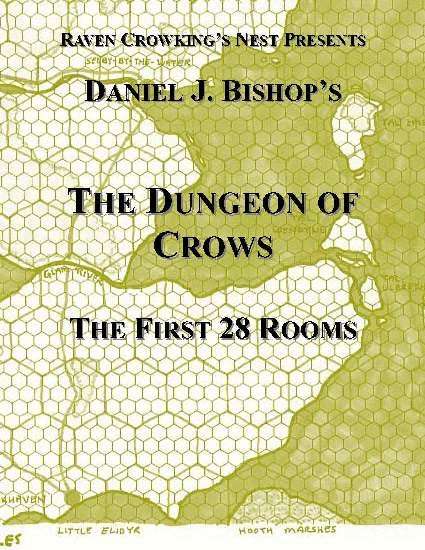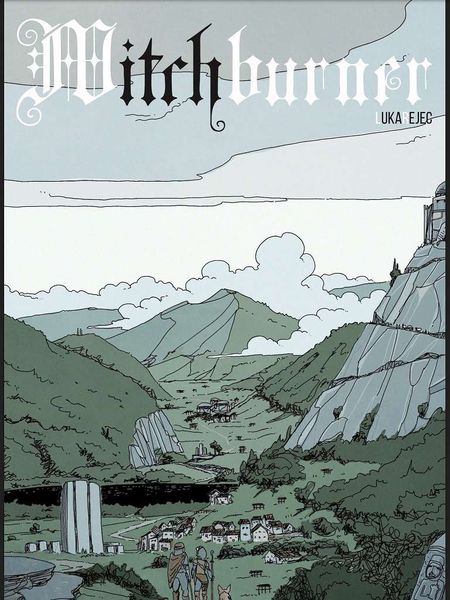
By Luka Rejec Hydra Cooperative OSR
… It’s an intimate, tragic adventure of witch hunting in a town huddled between rivers and mountains and forests one wet and cold October.
Warning: This adventure gets up close to a line I’m uncomfortable with in adventures. You should keep that in mind as you read my skepticism’s.
This 68 page “adventure” describes the NPC’s in a small town and wraps some rules around for garnering support from the locals to burn people as witches. Some reference sheets are provided to help the DM with the social situation, and it is CERTAINLY a well-charged situation in which to throw some PC gas … but I’m having my doubts as to the “Adventure” nature of this thing, as well as playability. In the end, I’ve decided it’s an adventure, and a cute idea, and some decent NPC’s, but it doesn’t all come together.
Ye Olde town council hires the party to find the witch in their town. If you can do it in less than a month then you get the cash. There are some mini-mechanics provided on convincing the town council that the accused is a witch, and some around the town folks growing to love, or hate, the party. There are thirty main NPC’s provided, each with a quirk or secret or two, and each generally with a small group of others in the household, also with a quirk or so. There are reference sheets for tracking the love/hate thing, and mini-rules for mob justice.
It is a social adventure. Each of the thirty days in the month has some little small event, like townsperson x tells the party townsperson Y was a witch when they were younger, etc. This is also augmented by some kind of calamity, some witchsign like stillborn cattle (and generally much weirder) that whips up the locals a bit more. Too harsh with the locals and they start to fear you. Too many fear you and a mob forms to burn the party as witches, the tables turned.
It’s a decent set up. The locals are in witch fear fever. Everyone has something to hide. The mini-rules handle the extra new situations well. The calamities and rumors on each day keep the action moving. And in to all this you add a WHOLE bunch of gas in the form of the party and wait for the shit to go down. It’s all very loose, almost a framework for an adventure rather than adventure. That’s both a strength and a weakness.
There’s no actual plot, other than what naturally develops during play. That’s because there is no actual witch … the locals are just all spun up because of some coincidences. But … no one knows that. The coincidences are not explained. The locations and events precipitating things are not touched on AT ALL. So, the pumpkin that spills teeth when cut in to? Only mentioned in passing once, in as much detail as I just typed. Or the fish that turned up dead with a handprint on them? Again, no more explanation AT ALL than I just provided. It’s literally all just rumors and people with something to hide. There’s strength to that, it recognizes that all you really need is a volatile situation and adding the party can turn it in to an adventure. On the downside … well, it feels plotless. The lack of explanation for the “bait” that starts everything is totally up to the DM. And not explicitly so, just implicitly.
It’s also the case that the party will need to frame someone to get the money … and/or save themselves from the mob. Or, they can just rob people.
The lack of the precipitating events, and of a plot, does leave things feeling a bit hollow. It’s all just fucking around. You could just as easily take People of Pembrocktonshire, or any other NPC book and say “they all live in the same village. The party is hired to find the village witch, but there isn’t one.” Same adventure, essentially.
It’s heart is in the right place. It tries to provide reference sheets, etc. The entire thing needs A LOT more cross-referencing. Every time it uses the words The Mayor it also need to put “(p39)” right after it … and do the same for all NPC’s. You gotta help the DM out … especially when things are as loosy goosy as this. People affiliations, like Councilor, Cult, Lodge could also be better noted in more locations. There’s also about a column of “background story” for each of the main NPC’s. They do a good job of communicating flavor, but are useless in play. I also think they are useless in play if you skip them … there’s no way you can hold 30 NPC’s in your head. This seems much more aimed at people just reading the adventure rather than running it. Still, skip it and your ok.
It’s all a bit too aimless for my tastes. The secrets are not explicit, or damning, in most cases. “I can tell wwhat’s wrong with someone when I touch them.” Ok, sure. I guess so. It needs a little more push in the PC direction and just a little more pretext at the beginning, I think. Yeah, there’s a rule on how to actually put a witch in the adventure. But, it’s just random.
Luka has done something different and I applaud that. It FEELS a lot like that movie The Witch … except for the ending of course.
And therein ends the review I wrote four months ago, when this thing first came out. I have NO idea how I didn’t post it then. In fact, I trashed it. I went through this morning to buy it and DriveThru said I owned it. A search in my Google Drive showed a doc in trashcan. Restoring it got me the review above. Fuck if I know man.
In rereading the adventure and the review I think I should add a few words. You can see me struggling with the open-ended nature of the adventure. Or, maybe, The Adventure As Theater. The Red Herring Adventure. Or maybe The Adventure As Journey Rather Than Destination. This is perhaps best exemplified in my disgust with most “it was all a dream” adventures, or adventures that, by fiat, remove consequences. “All the dead PC’s return to life. Yeah!” This adventure isn’t that, but the commonality is, I think, Theater. Let’s say the DM wings it one night because they have no adventure prepared. They make someone stare at the party when they enter the tavern. The guy follows them in and they see him stare at them some more. Nothing is actually going on, the party just catches the guy looking a bit. The party reacts, and the DM follows the natural consequences. This adventure is closer to that setup and you can see me struggling in my review. There is no witch. The phenomena is unexplained. And yet we continue to live our lives and have an adventure, placing meaning. [Life is, of course, without meaning. You can’t give it meaning. You must live it anyway, recognizing the absurdity.] This adventure gets up close to a line I’m uncomfortable with in adventures.
If you can accept the nature of the adventure then this is not a bad adventure. In fact, it’s a pretty decent adventure that could be better with a little work. It’s certainly one of the Best, if you’re not an overly-analyzing git like myself.
Also, Luka tells me that the Funeral Edition has some worksheets that make it easier to run. Luka is smart, so I suspect the new worksheets remove some of my troubles with keeping track of the mechanical systems, etc.
This is $13 at DriveThru. There’s a free version available.
https://www.drivethrurpg.com/product/256916/Witchburner?affiliate_id=1892600

